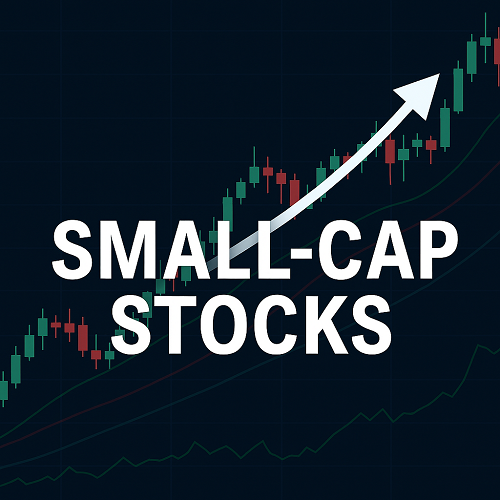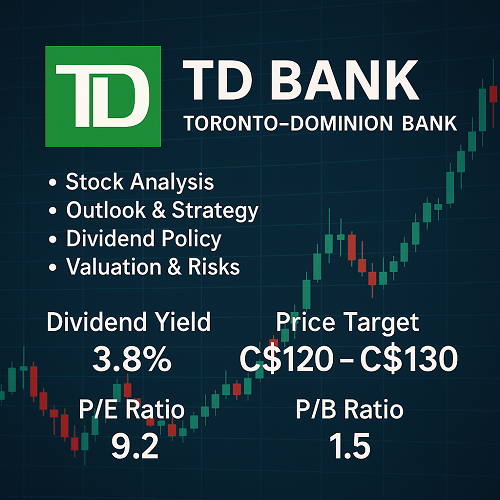A “small-cap” stock refers to a publicly-traded company whose market capitalisation (i.e., total outstanding shares × share price) falls below certain thresholds. Typical ranges in the United States are between ≈ US$250 million to US$2 billion.
However, it’s important to note:
- The cutoff is not universal. Some brokerages or indices may define “small-cap” slightly differently (for example, up to US$3 billion or between US$300 m and US$2.5 billion).
- Thresholds evolve with inflation, market growth and structural changes.
- Market capitalisation moves: a company may begin as small-cap, but as it grows and its stock rallies, it may migrate to mid-cap or large-cap status.
Why “Cap” Matters
The word “cap” refers to capitalisation. Capitalisation is simply the market’s current valuation of the company’s equity: Market Cap=Share Price×Outstanding Shares\text{Market Cap} = \text{Share Price} \times \text{Outstanding Shares}Market Cap=Share Price×Outstanding Shares
Smaller market cap means:
- Less mature company
- Potentially more upside (more growth runway)
- Potentially higher risk (less cushion, more vulnerability)
How Small-Cap Differs from Mid & Large-Cap
Understanding the categories:
- Large-cap stocks often refer to companies with market caps of US$10 billion or more (some definitions go higher).
- Mid-cap stocks are in the intermediate tier — for example US$2 billion to US$10 billion in some frameworks.
- Small-cap sits below that — offering growth potential, but more risk.
By being aware of these tiers, investors can calibrate their risk/return expectations and diversification accordingly.
Why Invest in Small-Cap Stocks? Growth Potential and Other Advantages
Greater Growth Runway
Because smaller companies often haven’t yet saturated markets, they may have more room to scale operations, expand into new geographies, or benefit from emerging trends. That “growth runway” is one of the major draws for small-cap investing.
Potential for Outperformance
Historically, small-cap stocks have at times outperformed their larger counterparts. The logic: less institutionally owned stock, more inefficiencies, more chance for discovery. For example, companies too small to be held in large mutual funds may benefit from under-coverage and undervaluation.
Lower Price Barriers for Entry
With smaller share prices (or smaller overall market cap) comes potentially lower cost of entry and the chance to pick emerging names before they become large-cap.
Diversification Benefits
Adding small-cap exposure may improve diversification:
- They often behave differently than large-cap stocks in certain market regimes.
- In growth-driven bull markets, small caps may rally more; in downturns they may fall more — so you use them carefully.
The Risks and Challenges of Small-Cap Stocks
Higher Volatility
Smaller companies typically have fewer assets, less diversified operations, thinner financial cushions — and so are more vulnerable to economic shocks, funding issues, and operational hiccups. Their stock prices tend to swing more widely.
Limited Analyst Coverage & Institutional Ownership
Because many large funds cannot or will not hold very small companies (due to liquidity constraints, internal rules, regulatory thresholds), small-cap companies often have less media exposure, fewer analysts following them, and less information transparency. That means more independent research is required.
Lower Liquidity
Smaller companies may have lower trading volume, wider bid-ask spreads, and may be harder to enter/exit at ideal prices — increasing transaction risk particularly in stressed markets.
Funding/Survival Risk
If a small company stumbles, the risk of bankruptcy or being shut out of debt/credit markets is higher than for a large company. Because the business is by definition less mature, there may be more operational risk.
Over-enthusiasm & Valuation Risk
Because the potential story is attractive, there’s a risk of paying too high a multiple for a small company (growth expectation baked in) and then under-delivery. Smaller companies may overpromise or rely on execution risk.
Key Metrics & How to Analyse a Small-Cap Company
When investing in or trading small-cap stocks, you’ll want to apply a mix of traditional metrics plus small-cap-specific filters.
Traditional Financial Metrics
- Revenue growth: Is the company consistently growing its top line year-over-year? A hallmark of small-cap value is emerging growth.
- Earnings (or losses) trend: Some small-caps are still unprofitable. If so, examine whether revenue growth is strong enough to suggest eventual profitability.
- Profit margins: For companies already profitable, are margins improving?
- Return on equity (ROE) / Return on assets (ROA): Even in small comps, you want to see decent efficiency.
- Balance sheet strength / cash flow: Does the company have enough working capital, manageable debt, and positive (or improving) free cash flow?
- Valuation multiples: Price-to-earnings (P/E), price-to-sales (P/S), enterprise value to EBITDA (EV/EBITDA) can give signals — but small-caps often trade at higher risk-supported multiples.
Small-Cap Specific Filters
- Market cap evolution: Is the company already growing beyond “small-cap” due to share price growth? A track record of increasing market cap may signal momentum.
- Analyst coverage / institutional moves: If relatively few analysts cover the company, there might be an “information advantage.” On the flip side, caution if no one is covering the company at all.
- Liquidity / float / insider holding: Low float can amplify price moves (both up and down). High insider ownership can align interests — but also reduces free float.
- Sector niche / competitive advantage: Smaller firms often succeed by being nimble or having a niche. Investigate: is there a defensible moat or just hope?
- Execution risk: Because growth is expected, execution matters. Has the company delivered on past guidance? Are there clear growth levers (new products, market expansion, acquisitions)?
- Macro-sensitivity: Smaller firms may be more sensitive to interest rates, credit conditions, supply chains, raw material costs. Check exposure.
- Valuation margin of safety: Even a small-cap needs a realistic view: what if growth slows? Do you have downside protection?
Portfolio Fit & Risk Management
- Determine position sizing: Because small-caps are riskier, limit exposure per position (e.g., 1-5% of portfolio) depending on your risk tolerance.
- Stop-loss or exit strategy: Given higher volatility, define your risk threshold (e.g., 15-30% downside) and stick to it.
- Diversification: Rather than picking a single small-cap, consider a basket of 5-10 to spread company-specific risk.
- Rebalancing discipline: As a small-cap grows and becomes mid-cap or large-cap, review whether it still fits your small-cap criteria or if you should take profits.
- Regular review: Because small-caps evolve quickly, revisit thesis every 3-6 months.
How to Gain Exposure: Indexes, ETFs, Mutual Funds & Direct Stocks
Benchmark Indexes
Some of the major small-cap benchmarks include:
- Russell 2000: Consists of ~2,000 of the smallest companies in the Russell 3000. Widely used as the small-cap benchmark.
- S&P SmallCap 600: Managed by S&P Dow Jones Indices; includes companies with market caps between around US$1 billion-US$6.7 billion, with earnings requirements — slightly higher threshold than some “pure” small-caps.
Using benchmarks allows you to assess whether your small-cap picks are outperforming the broader small-cap universe.
ETFs & Mutual Funds
If you prefer diversified exposure rather than picking individual stocks, consider:
- Small-cap index ETFs (tracking Russell 2000 or S&P SmallCap 600)
- Active small-cap mutual funds (which may specialise in growth, value, or sector-specific small‐caps)
- Factor‐based funds (small-cap + value, small-cap + momentum)
These vehicles reduce company-specific risk but still carry the broader small-cap risks (liquidity, volatility, correlation to growth cycles).
Direct Stock Picking
For investors who wish to select individual small-cap companies:
- Conduct the in-depth screening (as described in Section 4)
- Focus on companies with clear growth drivers, improving fundamentals, manageable risk and reasonable valuation
- Monitor news, earnings reports, insider buying, and analyst updates (where applicable)
- Be ready for more active involvement (both in research and in monitoring) compared to large-cap stocks
Strategic Approaches to Small-Cap Investing
Growth-Oriented Strategy
- Target companies with high revenue growth rates, perhaps 20 %+ per year
- Willing to pay a premium multiple in exchange for future growth runway
- Emphasis on innovation, niche markets, scalability
- Important to monitor whether growth is sustainable and margins improve
Value-Oriented Strategy
- Look for small-cap companies whose market value doesn’t reflect true fundamentals (undervalued)
- Metrics: low P/E, low P/S, high cash flow yield, strong balance sheets
- May be less glamorous but can offer lower risk than high-flying growth names
Momentum Strategy
- Small-caps can attract rapid investor interest (especially in bull markets)
- Use technical indicators, breakout patterns, relative strength to identify winners
- Higher risk: more susceptible to sharp reversals
Balanced Strategy / Core-Satellite
- Allocate a meaningful core position to diversified small-cap ETF/fund
- Use a few satellite positions in individual high-conviction small-cap stocks
- Ensures exposure while limiting single-stock risk
6.5 Tactical & Market-Cycle Strategy
- Recognise that small-caps tend to perform best during early-cycle or recovery phases (when growth becomes favourable, credit loosens, risk appetite rises)
- Conversely, they are more vulnerable in downturns or in credit-tightening phases
- Therefore, you may overweight small-caps when macro indicators (GDP growth, low interest rates, improving earnings) are favourable, and underweight when recession signs mount
Case Studies: Real-World Small-Cap Stock Successes and Failures
Success Story: Emerging Leader Gains Size
For example, a company which began at a market cap under US$1 billion, achieved strong revenue growth, margin expansion, and then experienced share-price appreciation multiple times over. (While this is illustrative, you should always study actual filings, though here for confidentiality we do not name specific names.) The lesson: entering early when fundamentals are improving can yield outsized returns.
Failure Story: Growth Doesn’t Materialise
A small-cap company may announce ambitious plans (new product, market expansion) but then hit regulatory delays, cost overruns, or loss of market share. What looked like high potential becomes a “value trap.” The critical learning: even a good idea is not enough — execution and fundamentals must back it up.
Using a Fund Approach — Diversification Wins
An investor allocated 10 % of their portfolio to a small-cap index fund five years ago, benefitting from the small-cap “premium” during the subsequent bull market — while mitigating the company-specific risk that would have come from picking individual names. This shows the appeal of diversified exposure.
How to Integrate Small-Caps Into Your Portfolio
Assess Your Risk Profile
- If you are aggressive, young, long horizon: you could allocate e.g., 10-20 % of equity portfolio to small-caps
- If moderate, approaching retirement: maybe 5 % or less, or use diversified funds rather than individual picks
- Always adapt to your time horizon, risk tolerance, liquidity needs
Set Allocation Rules and Manage Rebalancing
- Decide allocation: e.g., 10 % small-cap, 60 % large-cap, 30 % international/others
- Rebalance annually or semi-annually: If small-cap exposure grows significantly due to outperformance, consider trimming
- Conversely, if small-cap underperforms but fundamentals remain, consider adding (only when aligned with your thesis)
Use Stop-Loss / Exit Criteria
- For individual small caps: define exit rules — e.g., cut position if earnings growth slows for two consecutive quarters or if share price falls -30 %
- For funds: set longer time horizon but review fund management, fees, and relative performance to benchmark
Stay Informed & Monitor Macro Conditions
- Monitor interest rate environment, credit spreads, macro growth indicators — these often influence small-cap performance more than large-cap
- Be alert to liquidity issues, sector rotation (small-caps may lag when investors rotate into perceived safety)
Small-Cap Stocks vs. Forex & Crypto (Trader’s Perspective)
As someone engaged in stocks, forex and crypto trading, you’ll appreciate some cross-market lessons when dealing with small-caps.
Volatility Parallels
Small-cap stocks share many traits with crypto/assets: large moves, thinner liquidity, high risk/high reward. Just as with crypto trading, risk management and position sizing are critical.
Correlation and Diversification
- Small-caps often have higher beta relative to large-caps — they may amplify market moves.
- In periods of risk-on sentiment (similar to crypto rallies), small-caps may outperform; in risk-off they may collapse quicker.
- From a portfolio perspective, if you trade crypto or forex heavily, small-caps increase portfolio risk — so you may want smaller exposure.
Technical & Momentum Opportunities
Just as crypto and forex benefit from momentum, breakout and trend strategies, small-caps may also respond sharply to catalysts (earnings beats, product launches, sector rotation). If you trade actively, you can exploit these moves — but be prepared for rapid reversals.
Liquidity & Execution Risks
Similar to lesser‐known crypto coins or thin forex pairs, small-caps may suffer from wide bid/ask spreads, low float, and abnormal price gaps. Always factor in execution risk.
Frequently Asked Questions (FAQs)
Q1: Is it better to invest in small-cap stocks or mid-cap?
It depends on your risk tolerance and goals. Small-caps offer higher growth potential but also more risk; mid-caps can provide a compromise — growth potential with a bit more stability.
Q2: What is the “small-cap premium”?
The small-cap premium refers to the historical tendency for small-cap stocks to deliver higher average returns than large-caps over long horizons — though with higher volatility and occasional long drawdowns.
Q3: Are all small-cap stocks start-ups or early-stage companies?
No. Many small-cap companies are fully established businesses; they may simply be smaller in scale than large-cap peers.
Q4: Should I only buy small-cap ETFs instead of individual stocks?
If you lack time, resources or the desire to conduct in-depth research, ETFs or funds are a viable option — they spread risk but also limit upside relative to a successful individual pick.
Q5: When do small-cap stocks tend to perform well?
They tend to perform best when economic growth is accelerating, credit markets are open, and investor risk appetite is strong — i.e., early cycle phases. They typically underperform during recessions, tightening credit conditions or defensive rotations.
Q6: How do I avoid being burned by a “value trap” in small-caps?
Focus on both growth and fundamentals (not just story). Check for consistent revenue growth, improving margins, healthy cash flows, manageable debt, and realistic valuation. Avoid companies whose growth is entirely “hope” rather than visible execution.
Advanced Considerations & Emerging Trends
Small-Cap and ESG / Impact Investing
Smaller companies are increasingly integrating ESG (environmental, social, governance) frameworks. If your mandate includes ESG, you may find hidden gems among small-caps that align with sustainable business models (but also assess risk of “greenwashing”).
Technological Disruption & Small-Cap Advantage
Large firms may be slow to innovate; smaller companies can be agile, quicker to adopt new technologies (artificial intelligence, renewable energy, biotechnology). That agility can create outsized returns — but also outsized failure risk.
Private Equity & IPO Pipeline
Small-cap public companies can be takeover targets for larger firms, or may themselves be emerging IPOs. Monitoring M&A activity and the pipeline of private companies going public can offer additional signals.
International Small-Cap Exposure
While most discussion centers on U.S. small-caps, global small-cap opportunities exist (emerging markets, frontier markets). These carry additional currency, regulatory and political risk — but may offer even greater growth.
Tax and Fees Considerations
Small-cap funds sometimes carry higher fees (active management) or higher turnover (leading to tax burdens). When selecting funds or ETFs, review expense ratios, turnover rates, and tax efficiency.
Conclusion
Small-cap stocks represent a compelling — but complex — component of a sophisticated investment strategy. They offer:
- Significant growth potential
- Opportunity to beat institutional investors
- Attractive diversification benefits
Yet they also bring heightened risk, volatility and execution challenges. Whether you are a long-term investor, a tactical trader, or engaged in multi-asset strategies including stocks, forex and crypto, small-caps can merit a place — if used thoughtfully and managed diligently.
To succeed in the small-cap realm: do your homework, limit exposure, maintain diversification, set clear risk controls, and align your thesis with macro-environment and company fundamentals. Over the long run, the reward may be meaningful — but only if risk is respected.





 XAUT-USD
XAUT-USD  AMD
AMD  MARA
MARA  SHOP
SHOP  BULL
BULL  CL=F
CL=F